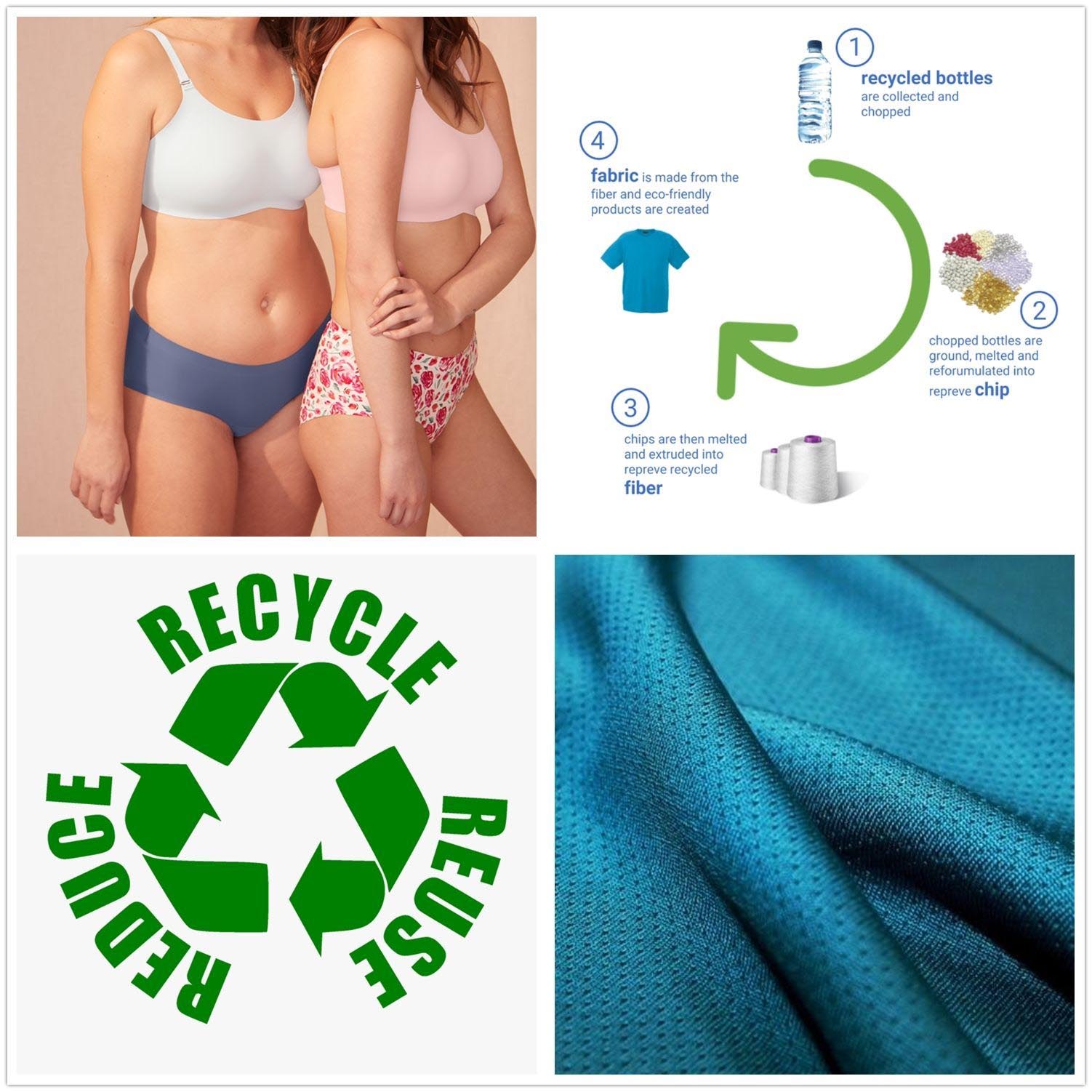Recycled Polyester
The fabrics commonly used in underwear Recycled polyester is a polyester fiber made from recycled polyester (such as bottle flakes, foam, waste silk, waste pulp, waste textiles, etc.) through a regeneration process. The process includes collecting and sorting plastic bottles, cleaning and cutting them into small pieces, melting the pieces into pellets, and then spinning the pellets into polyester yarn. This yarn can be used to make various textiles, including clothing (sportswear, jackets, swimsuits, underwear). Compared with traditional polyester, recycled polyester is considered more sustainable because it reduces the dependence on new petroleum-based raw materials and reduces waste by reusing existing materials. It can reduce costs, reduce oil consumption, increase economic benefits, and have important significance for the sustainable development of the chemical fiber industry. The quality and performance of recycled polyester are comparable to or even improved from virgin polyester. It has the following applications in underwear:
Recycled polyester can be made into various comfortable, breathable, moisture-wicking, anti-ultraviolet and other functional underwear fabrics, such as sports underwear, casual underwear, wire-free underwear, etc.
Recycled polyester can be blended or compounded with natural fibers such as organic cotton and biodegradable silk to improve the softness, skin-friendliness and comfort of underwear.
Recycled polyester can be made into various exquisite, elegant and sexy underwear styles, such as lace underwear, sheer underwear, strapless underwear, etc., to meet different aesthetic and occasion needs.
The application of recycled polyester in underwear not only improves the quality and function of underwear, but also saves oil resources, reduces carbon emissions, protects the environment and conforms to the concept of sustainable development. It meets the needs of more and more consumers for environmentally friendly products.


